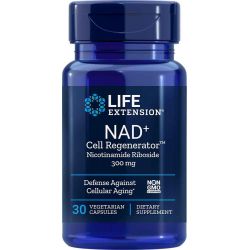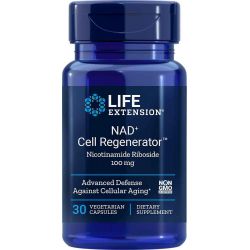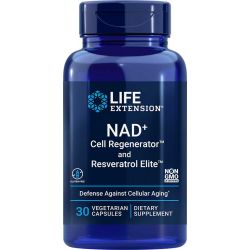Power a Longer Life via NAD+ Restoration

In year 2001, Life Extension® researchers actively sought a method to boost levels of a coenzyme in aging people. We knew this was critical to achieving healthy longevity.
Consumers had to wait until 2014 for a validated method to become available. This coenzyme is called NAD+ and is vital for energizing cells and supporting youthful cellular processes.1-4
For resveratrol users, NAD+ is especially important. That's because resveratrol promotes expression of cell proteins called sirtuins that protect against age-related decline.3-7
But sirtuins need NAD+ to function.
What you need to know
- Every cell in the body relies on NAD+ both to maintain normal energy supply and to protect the cell.
- Sirtuins, proteins critical for maintaining optimal health and longevity, are completely dependent on adequate levels of NAD+ to function optimally.
- As we age, our NAD+ levels and sirtuin activity decline.
- Interventions to boost NAD+ levels in cells have demonstrated promise in extending life and preventing loss of function.
- Nicotinamide riboside is an NAD+ precursor that is readily absorbed from the gut and is effective at boosting levels of NAD+ in cells throughout the body.
And as we age, NAD+ levels drastically plummet. 6-8
NAD+ and Brain Function
 Longer life means little without an enhanced healthspan as well. Fortunately, boosting levels of NAD+ in later life maximizes healthy function and can prevent degenerative disorders.
Longer life means little without an enhanced healthspan as well. Fortunately, boosting levels of NAD+ in later life maximizes healthy function and can prevent degenerative disorders.Impact of Severe NAD+ Deficit
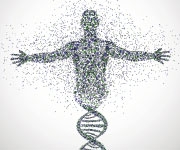 Tremors
Tremors- Depression
- Arterial Stiffness
- Circadian Rhythm Imbalance
- Pro-youth Genes Turned Off
- Restless Leg Syndrome
- Cellular Senescence
- Sarcopenia
- Death
In both studies, giving the mice nicotinamide riboside supplements stopped the decline of NAD+ levels in the brains—and greatly reduced cognitive deterioration.
Obesity, Metabolism, and Cardiovascular Function
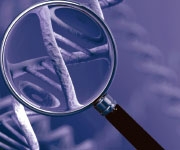
Obesity, diabetes, and metabolic syndrome are common age-related issues. Along with other factors, these conditions put people at risk for cardiovascular disease, cancer, and kidney failure.
NAD+ is crucial to basic metabolic functions and cellular integrity. Several studies confirm that raising levels of NAD+ increases metabolism and may help prevent and treat obesity, fatty liver disease, diabetes, and metabolic syndrome.24-28
That's where nicotinamide riboside comes in. By stimulating levels of NAD+, nicotinamide riboside enhances metabolism. In mice, it increases metabolic rate, raising body temperature slightly and reducing deposits of abdominal fat, which is tied to high risk for cardiovascular disease.29
Even in rats fed a high-fat diet, nicotinamide riboside boosts metabolism and prevents obesity.25,30
In mice suffering from prediabetes and diabetes, it improves control of blood sugar and reduces weight while protecting against tissue injury such as liver damage and nerve disease.27
The potential benefits for humans are extraordinary. Both by improving metabolic health and by its direct effects on the heart muscle and blood vessels, nicotinamide riboside shows promise in preventing cardiovascular disease.31
That's remarkable enough. But nicotinamide riboside supplements have also shown promise as a treatment for heart disease by raising levels of NAD+, known to be vital for normal heart function and recovery following an injury.32-34
In one study, mice with cardiac disease and heart failure were protected by nicotinamide riboside.32 While untreated animals rapidly developed dilation of the heart, thinning of the heart muscle, and decreased cardiac output—often seen in human heart disease—animals given supplements of nicotinamide riboside maintained cardiac muscle integrity and function.
NAD+ and Longevity
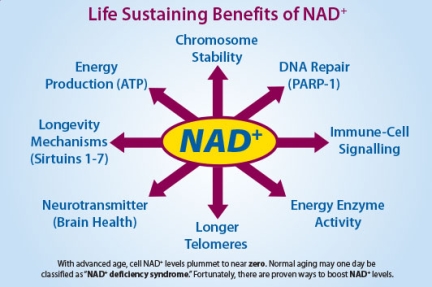
There are a number of known behaviors one can make to extend a healthy lifespan.
These include a wholesome diet, avoidance of toxins, intake of inflammation-suppressing nutrients, and regular exercise.
Recent studies show promise for a more targeted approach to increasing longevity.
Sirtuin activity is a crucial component to living a longer life.
As NAD+ levels fall and sirtuin activity wanes, aging becomes more evident as follows:
- Diminished brain function,35,36 leading to cognitive decline and risk for dementia.
- Inflammation in blood vessels that contributes to atherosclerosis and cardiovascular disease.37,38
- Fatty changes in the liver that leads to non-alcoholic fatty liver disease (NAFLD).39-41
- Increased fat storage,42,43 that leads to overweight and obesity. When fat is stored around the liver and other organs, it increases systemic inflammation and contributes to metabolic and cardiovascular disease.
- Insulin resistance, impairing the metabolism of glucose and leading to metabolic syndrome and diabetes.38,44,45
- Muscle changes, including loss of muscle strength, fat deposits in muscles, and fatigue. 46
Studies show that enhancing sirtuin activity promotes longevity.5-7,9,38,47,48 Sirtuin activity is vitally dependent on NAD+, so boosting the body's NAD+ levels as we age may help prolong life.
This has been demonstrated in a wide variety of living organisms.49,50
Yeast grown with nicotinamide riboside have an increase in lifespan.51 In one study, worms given nicotinamide riboside lived 16% longer.52
Even in already elderly mice, a study by an international team of scientists published in Science showed that nicotinamide riboside extends lifespan by nearly 5%.53 This is at an age where other treatments attempting to prolong life fail. Scientists also observed several biochemical changes in these animals, indicating rejuvenation of cell function.
NAD+ May Improve Heart Function
"Stabilizing the intracellular NAD+ level represents a promising therapeutic strategy to improve myocardial bioenergetics and cardiac function."
"In this issue of Circulation, Diguet, et al report exciting data suggesting that supplementation with NAD+ precursor, nicotinamide riboside, reduces cardiac dysfunction in preclinical models of heart failure."
— May 22, 2018 http://circ.ahajournals.org/content/137/21/2274
NAD+ and DNA Repair
 The DNA in our cells suffers considerable damage every day. The only reason this does not kill us is that cells are very efficient at repairing this damage, which comes in the form of single- and double-strand DNA breaks.
The DNA in our cells suffers considerable damage every day. The only reason this does not kill us is that cells are very efficient at repairing this damage, which comes in the form of single- and double-strand DNA breaks.
As NAD+ levels decline with age, we are less able to repair cellular DNA.
For example, sirtuins protect DNA from damage that can lead to potentially harmful mutations. Threats to DNA increase significantly with age. Protective sirtuin proteins must operate at full strength in order to properly safeguard DNA, shielding against age-related loss of function and risk for cancer.
In fact, research has demonstrated that dwindling sirtuin activity is associated with more rapid aging—and that boosting sirtuin activity is protective, prolonging lifespan and guarding against disease.9
But sirtuins require NAD+ to function. An ample and continuously renewing supply of NAD+ is needed by the cell to keep operating normally.
Since NAD+ levels diminish with advancing age, replenishing our NAD+ supply is essential to any plan to forestall aging and degenerative disease.9
NAD+ Needed for DNA Repair
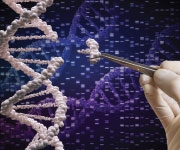 Each cell in your body suffers 10 DNA breaks every day.*
Each cell in your body suffers 10 DNA breaks every day.*- Unrepaired DNA damage is a major degenerative aging factor.
- NAD+ depletion with aging turns off DNA repair enzymes.
* Lieber, MR. The mechanism of double-strand DNA break repair by the nonhomologous DNA end-joining pathway. Annu Rev Biochem. 2010;79:1281-211.
Nicotinamide Riboside Boosts NAD+
 A proven method of boosting NAD+ levels in the body is to supply cells with precursor compounds that naturally convert to NAD +.
A proven method of boosting NAD+ levels in the body is to supply cells with precursor compounds that naturally convert to NAD +.
One way to do this is with nicotinamide riboside. This naturally occurring form of vitamin B3 is only found in trace amounts in the diet. Therefore, the only way to significantly raise its intake is through supplementation.
Research shows that when taken by mouth, nicotinamide riboside is highly bioavailable, and has been shown to boost NAD+ levels in the body.54
One study showed that compared to baseline, daily supplementation with 250 mg or 500 mg of nicotinamide riboside for 4 weeks increased NAD+ blood levels by approximate 40% and 90% respectively.55
NAD+ Sharply Plummets with Age:
- At age 50, we have 40% less NAD+ than at age 20.
- By age 80, NAD+ levels drop as much as 98%.
* The Plasma NAD+ Metabolome is Dysregulated in "Normal" Aging. Rejuvenation Research. 2018 Oct 23, and unpublished clinical observations.
Summary
NAD+ is a vital cofactor for energy metabolism and hundreds of longevity-promoting processes in every cell of the body.
Aging is associated with reduced NAD+ levels. This decline is a major contributor to the aging process and puts cells and tissues at risk for age-related injury and loss of function.
Nicotinamide riboside is a readily absorbed compound that helps cells maximize their supply of NAD+ to help maintain DNA repair.
Human studies show that nicotinamide riboside is highly bioavailable and rapidly increases NAD+ in cells.
Boosting NAD+ to more youthful levels with nicotinamide riboside has been demonstrated to prolong life and reverse loss of function in animal models.
What Are Sirtuins and Why Are They So Powerful as an Anti-Aging Target?
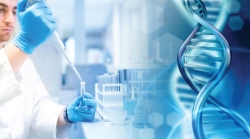 Sirtuins are regulatory proteins in all cells that play a critical role in the response to stress and injuries that cause damage, particularly DNA damage.6,7
Sirtuins are regulatory proteins in all cells that play a critical role in the response to stress and injuries that cause damage, particularly DNA damage.6,7
Over a lifetime, cells accumulate damage, which can lead to loss of function and risk for disease.
Without mechanisms to defend against and repair this damage, cells rapidly age and become dysfunctional. That is where sirtuins come in.
Activated sirtuins help initiate repair of DNA, preventing the development of dysfunctional genes and mutations.
Sirtuins are also involved in the body's internal clock, the circadian rhythm, which is crucial to maintaining a healthy metabolism. Defects in this clock have been associated with premature aging and disease.
Therefore, maintaining optimal sirtuin activity is one the body's best defenses against the ailments and illnesses associated with aging. But sirtuins require NAD+ to function normally.
Advancing age leads to accumulating DNA damage. As sirtuins use NAD+ to fight this damage, the body's supply of NAD+ is depleted. The resulting low NAD+ levels then impair the ability of sirtuins to continue functioning normally, leading to further DNA damage.
A powerful way to break this cycle is to replenish the body's levels of NAD+.
- Ansari HR, Raghava GP. Identification of NAD interacting residues in proteins. BMC Bioinformatics. 2010 Mar 30;11:160.
- Braidy N, Berg J, Clement J, et al. Role of Nicotinamide Adenine Dinucleotide and Related Precursors as Therapeutic Targets for Age-Related Degenerative Diseases: Rationale, Biochemistry, Pharmacokinetics, and Outcomes. Antioxid Redox Signal. 2018 May 11.
- Kulikova VA, Gromyko DV, Nikiforov AA. The Regulatory Role of NAD in Human and Animal Cells. Biochemistry (Mosc). 2018 Jul;83(7):800-12.
- Verdin E. NAD(+) in aging, metabolism, and neurodegeneration. Science. 2015 Dec 4;350(6265):1208-13.
- Watroba M, Dudek I, Skoda M, et al. Sirtuins, epigenetics and longevity. Ageing Res Rev. 2017 Nov;40:11-9.
- Johnson S, Imai SI. NAD (+) biosynthesis, aging, and disease. F1000Res. 2018;7:132.
- Imai S, Guarente L. NAD+ and sirtuins in aging and disease. Trends Cell Biol. 2014 Aug;24(8):464-71.
- Zhou CC, Yang X, Hua X, et al. Hepatic NAD(+) deficiency as a therapeutic target for non-alcoholic fatty liver disease in ageing. Br J Pharmacol. 2016 Aug;173(15):2352-68.
- Rajman L, Chwalek K, Sinclair DA. Therapeutic Potential of NAD-Boosting Molecules: The In Vivo Evidence. Cell Metab. 2018 Mar 6;27(3):529-47.
- Gong B, Pan Y, Vempati P, et al. Nicotinamide riboside restores cognition through an upregulation of proliferator-activated receptor-gamma coactivator 1alpha regulated beta-secretase 1 degradation and mitochondrial gene expression in Alzheimer's mouse models. Neurobiol Aging. 2013 Jun;34(6):1581-8.
- Hamity MV, White SR, Walder RY, et al. Nicotinamide riboside, a form of vitamin B3 and NAD+ precursor, relieves the nociceptive and aversive dimensions of paclitaxel-induced peripheral neuropathy in female rats. Pain. 2017 May;158(5):962-72.
- Hou Y, Lautrup S, Cordonnier S, et al. NAD(+) supplementation normalizes key Alzheimer's features and DNA damage responses in a new AD mouse model with introduced DNA repair deficiency. Proc Natl Acad Sci U S A. 2018 Feb 20;115(8):E1876-E85.
- Klaidman L, Morales M, Kem S, et al. Nicotinamide offers multiple protective mechanisms in stroke as a precursor for NAD+, as a PARP inhibitor and by partial restoration of mitochondrial function. Pharmacology. 2003 Nov;69(3):150-7.
- Lin JB, Kubota S, Ban N, et al. NAMPT-Mediated NAD(+) Biosynthesis Is Essential for Vision In Mice. Cell Rep. 2016 Sep 27;17(1):69-85.
- Long AN, Owens K, Schlappal AE, et al. Effect of nicotinamide mononucleotide on brain mitochondrial respiratory deficits in an Alzheimer's disease-relevant murine model. BMC Neurol. 2015 Mar 1;15:19.
- Sadanaga-Akiyoshi F, Yao H, Tanuma S, et al. Nicotinamide attenuates focal ischemic brain injury in rats: with special reference to changes in nicotinamide and NAD+ levels in ischemic core and penumbra. Neurochem Res. 2003 Aug;28(8):1227-34.
- Schondorf DC, Ivanyuk D, Baden P, et al. The NAD+ Precursor Nicotinamide Riboside Rescues Mitochondrial Defects and Neuronal Loss in iPSC and Fly Models of Parkinson's Disease. Cell Rep. 2018 Jun 5;23(10):2976-88.
- Sorrentino V, Romani M, Mouchiroud L, et al. Enhancing mitochondrial proteostasis reduces amyloid-beta proteotoxicity. Nature. 2017 Dec 14;552(7684):187-93.
- Vaur P, Brugg B, Mericskay M, et al. Nicotinamide riboside, a form of vitamin B3, protects against excitotoxicity-induced axonal degeneration. FASEB J. 2017 Dec;31(12):5440-52.
- Wang X, Hu X, Yang Y, et al. Nicotinamide mononucleotide protects against beta-amyloid oligomer-induced cognitive impairment and neuronal death. Brain Res. 2016 Jul 15;1643:1-9.
- Wei CC, Kong YY, Hua X, et al. NAD replenishment with nicotinamide mononucleotide protects blood-brain barrier integrity and attenuates delayed tissue plasminogen activator-induced haemorrhagic transformation after cerebral ischaemia. Br J Pharmacol. 2017 Nov;174(21):3823-36.
- Zhou M, Ottenberg G, Sferrazza GF, et al. Neuronal death induced by misfolded prion protein is due to NAD+ depletion and can be relieved in vitro and in vivo by NAD+ replenishment. Brain. 2015 Apr;138(Pt 4):992-1008.
- Won SJ, Choi BY, Yoo BH, et al. Prevention of traumatic brain injury-induced neuron death by intranasal delivery of nicotinamide adenine dinucleotide. J Neurotrauma. 2012 May 1;29(7):1401-9.
- Bai P, Canto C, Oudart H, et al. PARP-1 inhibition increases mitochondrial metabolism through SIRT1 activation. Cell Metab. 2011 Apr 6;13(4):461-8.
- Canto C, Houtkooper RH, Pirinen E, et al. The NAD(+) precursor nicotinamide riboside enhances oxidative metabolism and protects against high-fat diet-induced obesity. Cell Metab. 2012 Jun 6;15(6):838-47.
- Kraus D, Yang Q, Kong D, et al. Nicotinamide N-methyltransferase knockdown protects against diet-induced obesity. Nature. 2014 Apr 10;508(7495):258-62.
- Trammell SA, Weidemann BJ, Chadda A, et al. Nicotinamide Riboside Opposes Type 2 Diabetes and Neuropathy in Mice. Sci Rep. 2016 May 27;6:26933.
- Yoshino J, Mills KF, Yoon MJ, et al. Nicotinamide mononucleotide, a key NAD(+) intermediate, treats the pathophysiology of diet- and age-induced diabetes in mice. Cell Metab. 2011 Oct 5;14(4):528-36.
- Crisol BM, Veiga CB, Lenhare L, et al. Nicotinamide riboside induces a thermogenic response in lean mice. Life Sci. 2018 Oct 15;211:1-7.
- Serrano A, Asnani-Kishnani M, Rodriguez AM, et al. Programming of the Beige Phenotype in White Adipose Tissue of Adult Mice by Mild Resveratrol and Nicotinamide Riboside Supplementations in Early Postnatal Life. Mol Nutr Food Res. 2018 Nov;62(21):e1800463.
- Matasic DS, Brenner C, London B. Emerging potential benefits of modulating NAD(+) metabolism in cardiovascular disease. Am J Physiol Heart Circ Physiol. 2018 Apr 1;314(4):H839-H52.
- Diguet N, Trammell SAJ, Tannous C, et al. Nicotinamide Riboside Preserves Cardiac Function in a Mouse Model of Dilated Cardiomyopathy. Circulation. 2018 May 22;137(21):2256-73.
- Ryu D, Zhang H, Ropelle ER, et al. NAD+ repletion improves muscle function in muscular dystrophy and counters global PARylation. Sci Transl Med. 2016 Oct 19;8(361):361ra139.
- Xu W, Barrientos T, Mao L, et al. Lethal Cardiomyopathy in Mice Lacking Transferrin Receptor in the Heart. Cell Rep. 2015 Oct 20;13(3):533-45.
- Imai S. Dissecting systemic control of metabolism and aging in the NAD World: the importance of SIRT1 and NAMPT-mediated NAD biosynthesis. FEBS Lett. 2011 Jun 6;585(11):1657-62.
- Imai S, Yoshino J. The importance of NAMPT/NAD/SIRT1 in the systemic regulation of metabolism and ageing. Diabetes Obes Metab. 2013 Sep;15 Suppl 3:26-33.
- Sebastian C, Satterstrom FK, Haigis MC, et al. From sirtuin biology to human diseases: an update. J Biol Chem. 2012 Dec 14;287(51):42444-52.
- Haigis MC, Sinclair DA. Mammalian sirtuins: biological insights and disease relevance. Annu Rev Pathol. 2010;5:253-95.
- Schug TT, Li X. Sirtuin 1 in lipid metabolism and obesity. Ann Med. 2011 May;43(3):198-211.
- Tao R, Wei D, Gao H, et al. Hepatic FoxOs regulate lipid metabolism via modulation of expression of the nicotinamide phosphoribosyltransferase gene. J Biol Chem. 2011 Apr 22;286(16):14681-90.
- Kemper JK, Choi SE, Kim DH. Sirtuin 1 deacetylase: a key regulator of hepatic lipid metabolism. Vitam Horm. 2013;91:385-404.
- Ahn J, Lee H, Jung CH, et al. MicroRNA-146b promotes adipogenesis by suppressing the SIRT1-FOXO1 cascade. EMBO Mol Med. 2013 Oct;5(10):1602-12.
- Pang W, Wang Y, Wei N, et al. Sirt1 inhibits akt2-mediated porcine adipogenesis potentially by direct protein-protein interaction. PLoS One. 2013;8(8):e71576.
- Sasaki T, Kim HJ, Kobayashi M, et al. Induction of hypothalamic Sirt1 leads to cessation of feeding via agouti-related peptide. Endocrinology. 2010 Jun;151(6):2556-66.
- Frojdo S, Durand C, Molin L, et al. Phosphoinositide 3-kinase as a novel functional target for the regulation of the insulin signaling pathway by SIRT1. Mol Cell Endocrinol. 2011 Mar 30;335(2):166-76.
- Feige JN, Lagouge M, Canto C, et al. Specific SIRT1 activation mimics low energy levels and protects against diet-induced metabolic disorders by enhancing fat oxidation. Cell Metab. 2008 Nov;8(5):347-58.
- Guarente L. Calorie restriction and sirtuins revisited. Genes Dev. 2013 Oct 1;27(19):2072-85.
- Satoh A, Stein L, Imai S. The role of mammalian sirtuins in the regulation of metabolism, aging, and longevity. Handb Exp Pharmacol. 2011;206:125-62.
- North BJ, Rosenberg MA, Jeganathan KB, et al. SIRT2 induces the checkpoint kinase BubR1 to increase lifespan. EMBO J. 2014 Jul 1;33(13):1438-53.
- Fang EF, Scheibye-Knudsen M, Brace LE, et al. Defective mitophagy in XPA via PARP-1 hyperactivation and NAD(+)/SIRT1 reduction. Cell. 2014 May 8;157(4):882-96.
- Belenky P, Racette FG, Bogan KL, et al. Nicotinamide riboside promotes Sir2 silencing and extends lifespan via Nrk and Urh1/Pnp1/Meu1 pathways to NAD+. Cell. 2007 May 4;129(3):473-84.
- Mouchiroud L, Houtkooper RH, Moullan N, et al. The NAD(+)/Sirtuin Pathway Modulates Longevity through Activation of Mitochondrial UPR and FOXO Signaling. Cell. 2013 Jul 18;154(2):430-41.
- Zhang H, Ryu D, Wu Y, et al. NAD(+) repletion improves mitochondrial and stem cell function and enhances life span in mice. Science. 2016 Jun 17;352(6292):1436-43.
- Trammell SA, Schmidt MS, Weidemann BJ, et al. Nicotinamide riboside is uniquely and orally bioavailable in mice and humans. Nat Commun. 2016 Oct 10;7:12948.
- Dellinger RW, Santos SR, Morris M, et al. Repeat dose NRPT (nicotinamide riboside and pterostilbene) increases NAD(+) levels in humans safely and sustainably: a randomized, double-blind, placebo-controlled study. NPJ Aging Mech Dis. 2017 2017/11/24;3(1):17.

